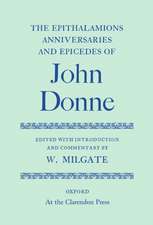Imagining the Penitentiary: Fiction and the Architecture of Mind in Eighteenth-Century England
Autor John Benderen Limba Engleză Paperback – 15 dec 1989
This brilliant and insightful contribution to cultural studies investigates the role of literature—particularly the novel—and visual arts in the development of institutions. Arguing the attitudes expressed in narrative literature and art between 1719 and 1779 helped bring about the change from traditional prisons to penitentiaries, John Bender offers studies of Robinson Crusoe, Moll Flanders, The Beggar's Opera, Hogarth's Progresses, Jonathan Wild, and Amelia as well as illustrations from prison literature, art, and architecture in support of his thesis.
Preț: 339.47 lei
Nou
Puncte Express: 509
Preț estimativ în valută:
60.08€ • 70.46$ • 52.68£
60.08€ • 70.46$ • 52.68£
Carte tipărită la comandă
Livrare economică 27 ianuarie-10 februarie 26
Preluare comenzi: 021 569.72.76
Specificații
ISBN-13: 9780226042299
ISBN-10: 0226042294
Pagini: 356
Ilustrații: 71 halftones, frontispiece
Dimensiuni: 165 x 238 x 23 mm
Greutate: 0.54 kg
Ediția:1
Editura: University of Chicago Press
Colecția University of Chicago Press
ISBN-10: 0226042294
Pagini: 356
Ilustrații: 71 halftones, frontispiece
Dimensiuni: 165 x 238 x 23 mm
Greutate: 0.54 kg
Ediția:1
Editura: University of Chicago Press
Colecția University of Chicago Press
Notă biografică
John Bender is Jean G. and Morris M. Doyle Professor in Interdisciplinary Studies at Stanford University, in the Departments of English and Comparative Literature. Imagining the Penitentiary was awarded the 1987 Louis Gottschalk Prize of the American Society for Eighteenth-Century Studies.
Cuprins
Illustrations and Acknowledgments
Preface
Introduction
1. Prison and the Novel as Cultural Systems
2. The Novel and the Rise of the Penitentiary: Moll Flanders and Robinson Crusoe
3. The City and the Rise of the Penitentiary: A Journal of the Plague Year
4. Generic Conflict and Reformist Discourse in Gay and Hogarth
5. Narration and "Civil Power": Jonathan Wild in Fielding's Career
6. Fielding and the Juridical Novel
7. The Aesthetic of Isolation as Social System
8. The Absorptive Tableau and the Public Execution: A Postscript on Transparency as Practice
Notes
Index
Preface
Introduction
1. Prison and the Novel as Cultural Systems
2. The Novel and the Rise of the Penitentiary: Moll Flanders and Robinson Crusoe
3. The City and the Rise of the Penitentiary: A Journal of the Plague Year
4. Generic Conflict and Reformist Discourse in Gay and Hogarth
5. Narration and "Civil Power": Jonathan Wild in Fielding's Career
6. Fielding and the Juridical Novel
7. The Aesthetic of Isolation as Social System
8. The Absorptive Tableau and the Public Execution: A Postscript on Transparency as Practice
Notes
Index












